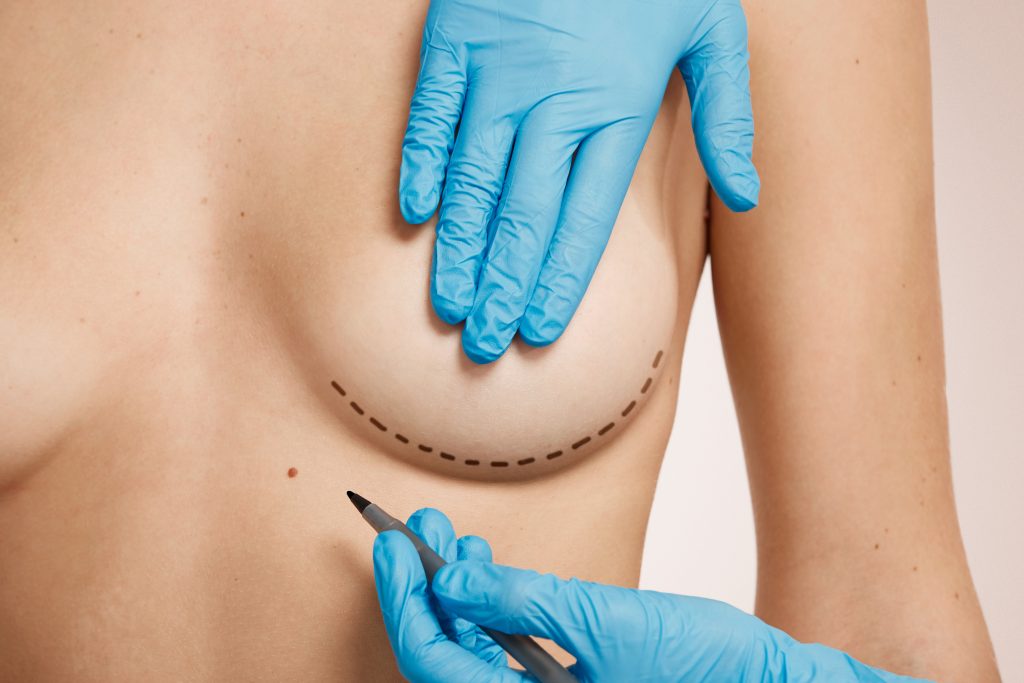Informed Choices: Navigating the Safety Landscape of Breast Enhancement
Posted on: February 6, 2024
Breast enhancement surgery stands as a pivotal choice for individuals seeking to alter their appearance, aiming for a change that can boost confidence and satisfaction with one’s body image. This surgical procedure encompasses various techniques tailored to meet unique needs and expectations, ranging from augmentation to lifts, each designed with precision to ensure safety and achieve desired outcomes. As the popularity of these surgeries grows, understanding the nuances—such as procedural options, potential risks, and recovery insights—is essential for making an informed decision that aligns with personal health goals and aesthetic desires.
Understanding Risks of Breast Enhancement Surgery
Infection and Scarring
Breast enhancement surgery, like any surgical procedure, carries the risk of infection. Despite sterile techniques, bacteria can enter incisions. This may lead to redness, pain, and sometimes more severe complications requiring antibiotics or additional surgeries.
Scarring is another concern. While surgeons aim for minimal visibility, every person’s body reacts differently to healing. Some might experience prominent scars that affect the aesthetic outcome.
Anesthesia Complications
Undergoing any surgery involves anesthesia. Though generally safe, it poses risks especially for those with underlying health conditions. Complications can range from mild nausea to serious issues like respiratory problems or allergic reactions.
Understanding these risks helps in making informed decisions about undergoing breast enhancement surgery.
Aesthetic Outcomes
Not all surgeries result in the desired look. There’s always a possibility of unsatisfactory outcomes such as asymmetry between breasts or an unnatural appearance which might require revision surgery.
Making an informed decision means weighing these potential outcomes against personal expectations and discussing them thoroughly with your surgeon.
Types of Breast Implants: Saline vs. Silicone
Saline Implants
Saline implants are filled with sterile salt water. They’re inserted empty and then filled once in place. This method offers a key advantage.
Leaks are easy to detect in saline implants. If they rupture, the body absorbs the saline safely. However, some patients report that saline implants feel less natural compared to silicone options.
Silicone Implants
Silicone breast implants contain a gel that mimics human fat, providing a more natural feel. Many prefer these for their realistic texture.
However, if silicone implants leak, it’s harder to notice because the gel may remain within the implant shell or escape into the breast implant pocket. Regular monitoring through MRI scans is recommended for detecting leaks in silicone implants.
Both types have pros and cons:
- Saline advantages: Easier leak detection; safer rupture consequence.
- Silicone advantages: More natural feel; preferred by many for aesthetics.
FDA approval varies between these options:
- Saline: Approved for women 18 and older.
- Silicone: Recommended for those 22 and up due to higher risks if ruptured.
In choosing between saline and silicone breast implants, consider how each type aligns with your personal health goals and aesthetic desires. Discussing with a qualified surgeon can help weigh these factors against potential risks highlighted previously.
Symptoms and Treatment of Implant Complications
Identifying Symptoms
After choosing between saline and silicone implants, it’s crucial to monitor for complications. Symptoms like pain, swelling, and changes in breast shape or size can indicate problems. These might be signs of implant illness or local complications.
Patients may notice a difference in sensation around the breast area. Persistent swelling or discomfort should prompt a visit to the doctor. Early detection is key to preventing more serious issues.
Seeking Treatment
Treatment options vary based on the complication diagnosed. For minor issues, medication might suffice. However, severe cases could require implant removal or replacement.
Doctors consider several factors before recommending treatment:
- The type of implant (saline vs silicone)
- The severity of symptoms
- The presence of an infection
- Whether there’s damage to the outer shell
In some instances, textured implants have been linked with systemic symptoms like joint pain. This condition requires careful diagnosis and possibly disease-specific treatment.
Regular check-ups are vital for early detection of complications. They help prevent severe consequences by ensuring timely intervention.
Long-Term Risks and Monitoring After Surgery
Cancer Risk
Breast enhancement surgery carries long-term risks. One significant risk is the increased chance of certain cancers. Studies have linked breast implants to a higher risk of developing lymphomas.
Patients should be aware of this potential complication. Regular physical exams are crucial for early detection. Awareness and monitoring can help manage these risks effectively.
Autoimmune Diseases
Another concern is autoimmune diseases. Some patients report symptoms like memory loss and pain after their surgical procedure. These could indicate an autoimmune response.
It’s important for patients to report any unusual symptoms to their doctor promptly. Early evaluation can lead to better management of these conditions.
Implant Monitoring
Periodic MRI scans are essential for those with silicone implants. They help check the implant’s integrity over time.
Routine screenings every two to three years are recommended by health professionals. This ensures that any issues with the implant are detected early on, preventing further complications.
Self-Exams
Self-exams play a key role in monitoring breast health post-surgery.
- Patients should perform regular self-exams.
- Any changes or irregularities should prompt a professional evaluation immediately.
Doing so helps in identifying potential problems at an early stage, allowing for timely intervention.
FDA Requirements and Safety Considerations for Implants
Pre-Market Approval
The FDA requires all breast implants to undergo rigorous pre-market approval. This ensures only safe and effective products reach consumers. Manufacturers must provide comprehensive testing data.
Testing includes evaluating the implant’s durability, its impact on the body, and potential risks. The FDA reviews this data thoroughly before granting approval.
Ongoing Studies
Manufacturers must also conduct ongoing clinical studies. These studies gather long-term safety data on breast enhancement surgery implants.
The goal is to monitor how implants perform over years or even decades. This helps identify any late-emerging risks not evident in initial testing.
Clear Labeling
Implants must come with clear labeling about their risks and benefits. Labels also include detailed manufacturer information.
This transparency allows patients to make informed decisions about breast enhancement surgery. It provides a decision checklist, highlighting key factors to consider before proceeding with surgery.
Impact of Surgery on Breastfeeding and Reproductive Health
Breastfeeding Challenges
Many women worry about breastfeeding after breast enhancement surgery. This concern is valid. Surgeries involving the breast can lead to nerve damage or changes in the milk ducts. These issues might make breastfeeding difficult.

Research shows that certain incision types and implant placements have less impact on breastfeeding ability. However, there’s no guarantee. Women should discuss these concerns with their health care provider before making a decision.
Fertility Considerations
Breast enhancement surgery has no proven impact on fertility according to studies. Yet, it’s crucial for women planning pregnancies to talk with their surgeon beforehand.
This discussion allows the physician to assess any potential risks related to anesthesia or the procedure itself. It also helps in choosing an implant type that suits future pregnancy plans best.
Importance of Disclosure
Disclosing pregnancy plans is vital when considering breast enhancement surgery.
- Discussing these plans helps your health care provider give better advice.
- It ensures you are informed about all possible outcomes related to breastfeeding and reproductive health post-surgery.
Making this decision involves weighing many factors including:
- Potential challenges in breastfeeding
- The absence of proven impacts on fertility
Understanding BIA-ALCL and BIA-SCC Risks
Rare Lymphoma
BIA-ALCL stands for Breast Implant-Associated Anaplastic Large Cell Lymphoma. It is a rare type of cancer. This lymphoma develops around textured breast implants. Not every woman with such implants will develop BIA-ALCL, but the risk exists.
Symptoms include swelling or pain in the area of the implant. These signs should not be ignored. Early detection through regular monitoring can lead to successful treatment outcomes.
Emerging Concern
BIA-SCC refers to Breast Implant-Associated Squamous Cell Carcinoma. This concern is newer compared to BIA-ALCL and relates directly to squamous cell carcinoma linked with breast implants.
Like with any cancer, early consultation upon noticing unusual symptoms is key. Symptoms might include changes in skin texture or new growths near the implant site.
Monitoring Importance
Regular check-ups are vital after breast enhancement surgery.
- Monitoring helps detect any abnormalities early.
- Immediate medical consultation is crucial if symptoms arise.
This proactive approach aids in managing potential risks associated with breast implants effectively.
Importance of Ongoing Maintenance of Breast Implants
Routine Check-ups
Routine follow-ups are key. After breast enhancement surgery, visiting a healthcare provider regularly is vital. These check-ups help ensure the implants remain in good condition.
During these visits, doctors assess the health and appearance of the implants. They look for any signs of complications that might require attention. This proactive approach helps in maintaining the overall well-being and aesthetics of the enhancements.
Awareness Updates
Staying informed is crucial. Knowing when to replace or remove breast implants can safeguard one’s health. Implants have a certain lifespan, typically between 10 to 15 years, but this can vary based on various factors including type and individual circumstances.
Awareness about new research or FDA advisories regarding breast implants also plays an important role. The medical community constantly updates its knowledge base regarding implant safety issues such as BIA-ALCL and BIA-SCC risks mentioned earlier.
- Bullet points summarizing key takeaways:
- Regular check-ups with healthcare providers are essential.
- Being aware of implant lifespan helps plan necessary actions.
- Keeping up-to-date with medical advice ensures safety.
Closing Thoughts
Breast enhancement surgery, while offering aesthetic and psychological benefits, carries inherent risks and responsibilities. The choice between saline and silicone implants, understanding potential complications, long-term risks, FDA requirements, impacts on breastfeeding and reproductive health, as well as the rare but serious conditions of BIA-ALCL and BIA-SCC are crucial considerations. This article has aimed to equip readers with comprehensive knowledge, emphasizing the importance of informed decisions and ongoing maintenance for those considering or having undergone breast implant surgery. The decision to undergo breast enhancement should be made with careful consideration of these factors, prioritizing health and safety above all.
For individuals contemplating breast enhancement surgery or seeking more information on maintaining existing implants, consulting with a certified plastic surgeon is recommended. Such dialogue ensures personalized advice tailored to individual health profiles and cosmetic goals, fostering a safer pathway to achieving desired aesthetic outcomes.
Frequently Asked Questions
What are the risks associated with breast enhancement surgery?
Breast enhancement surgery can lead to complications such as infection, implant rupture, and capsular contracture. It’s important to discuss potential risks with a qualified surgeon.
Saline vs. Silicone implants: Which is safer?
Both types of implants have been approved by the FDA but have different characteristics. Silicone implants tend to feel more natural, while saline implants pose less risk if they leak. The choice depends on personal preference and medical advice.
How do I recognize implant complications?
Symptoms of implant complications include unusual swelling, pain around the implant site, changes in breast shape or size, and redness or warmth indicating infection. Immediate consultation with your surgeon is advised upon noticing these signs.
What long-term monitoring is necessary after breast enhancement surgery?
Long-term monitoring includes regular check-ups for implant integrity via MRI or ultrasound as recommended by your healthcare provider and immediate reporting of any unusual symptoms or changes in breast appearance.
Are there specific FDA requirements for breast implants?
The FDA mandates rigorous testing for safety and effectiveness before approving breast implants. This includes clinical trials and post-market surveillance to monitor ongoing safety profiles of both saline and silicone options.
Can I still breastfeed after getting breast implants?
Many women successfully breastfeed after having breast enhancement surgery; however, it may depend on the type of surgery performed. Discussing breastfeeding intentions with your surgeon beforehand is crucial for appropriate surgical planning.
What are BIA-ALCL and BIA-SCC risks associated with breast implants?
BIA-ALCL (Breast Implant-Associated Anaplastic Large Cell Lymphoma) and BIA-SCC (Squamous Cell Carcinoma) are rare but serious conditions linked to certain types of textured surface design in some cases of cancer development around breasts implanted areas. Awareness and early detection through regular follow-ups are key.





